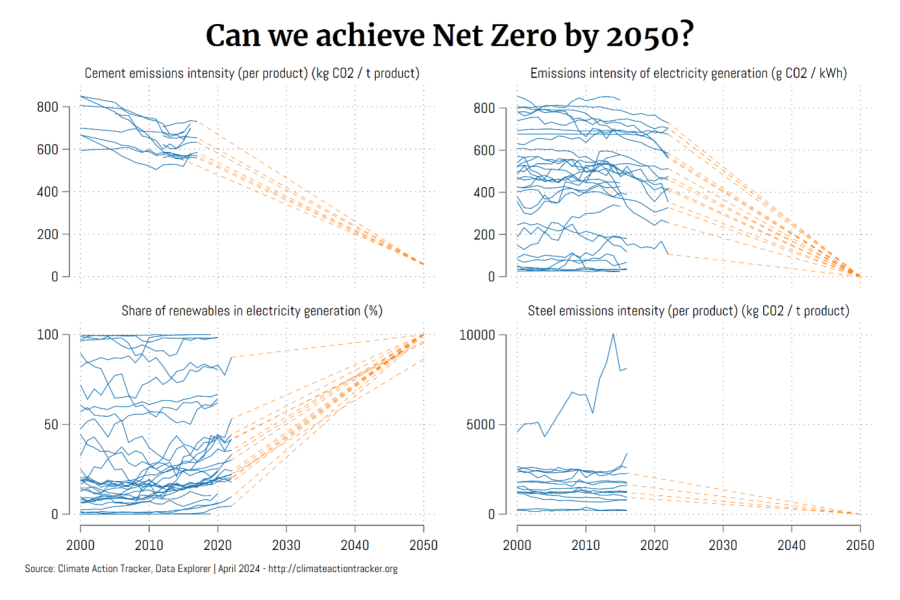GRAPH - Can we achieve Net Zero by 2050?
The window to achieve net zero emissions by 2050 is closing rapidly. Most countries' Nationally Determined Contributions (NDCs) are not ambitious enough to align with the 1.5°C targets. Furthermore, only a small number of nations have submitted their updated NDC 3.0, that was due in late 2024, highlighting a critical gap in climate action, that is likely to exacerbate due to increasing geopolitical fragmentation.
 Graph of the Month February 2025
Graph of the Month February 2025
The graph of the month shows selected indicators from the Climate Action Tracker, an independent project that tracks Nationally Determined Contributions (NDCs), Long-term Strategies (LTS), and other policies that are aligned with the Paris Agreement. In the figure, the blue lines represent past trends for countries in the database, while orange lines show the gap to self-defined 2050 net zero targets. Countries without an orange line have yet to specify 2050 goals. The data reveals that current trends in sectors like cement, steel, electricity generation, and renewable energy deployment are deviating away from pathways required to meet net zero goals. Even though some progress can be observed, it might not be sufficient to address the scale of the challenge.
To close this gap, countries need to urgently enhance their NDCs and LTSs to align with the level of ambition required for a net zero transition. Rapid decarbonization in carbon-intensive sectors, alongside an accelerated transition to renewable energy, is essential. Strengthened international cooperation and equitable mechanisms are also critical to ensure global participation in these efforts. Without immediate and coordinated action, the 1.5°C target will become unattainable, and the costs of inaction will likely outpace current mitigation and adaptation investment needs.
Author: Asjad Naqvi
